Guide To Vintage Shopping and Reducing Your Toxic Fashion Footprint
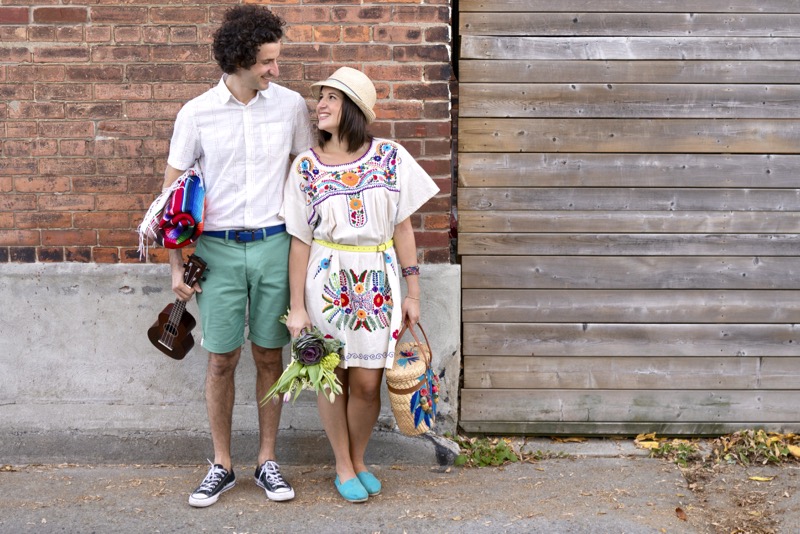
In my attempts to save all of us from drowning in the increasingly excessive landfill waste, chemical waste and water waste of the current state of the ‘fashion’ world, I am sharing my guide to vintage and second hand shopping and explaining why this matters (beyond just the style vibes) in reducing your toxic fashion footprint. I know this can be daunting territory to dive into, but the good news is that shopping vintage doesn’t mean you have to dress like a member of The Partridge Family (any other fans?).
We now buy five times more clothing than we did in 1980 and Americans are piling 10.5 million tons of clothing into landfills every year. Additionally, only 15% of clothing that we are no longer be wearing is being recycled.
This is why I am a huge fan and advocate for vintage and second hand. What if we can give wearable clothes a second (or third, or fourth) chance at life? We are reducing production waste, water waste, keeping things out of the landfill, with the added bonus of dressing like the unique snowflakes that we are.
Though fashion is not a usual topic for me, lifestyle is. The waste we make, whether it’s from plastic packaging, toxic cleaners or our wardrobe, is part of the lifestyles we choose.
Ready to dive in?
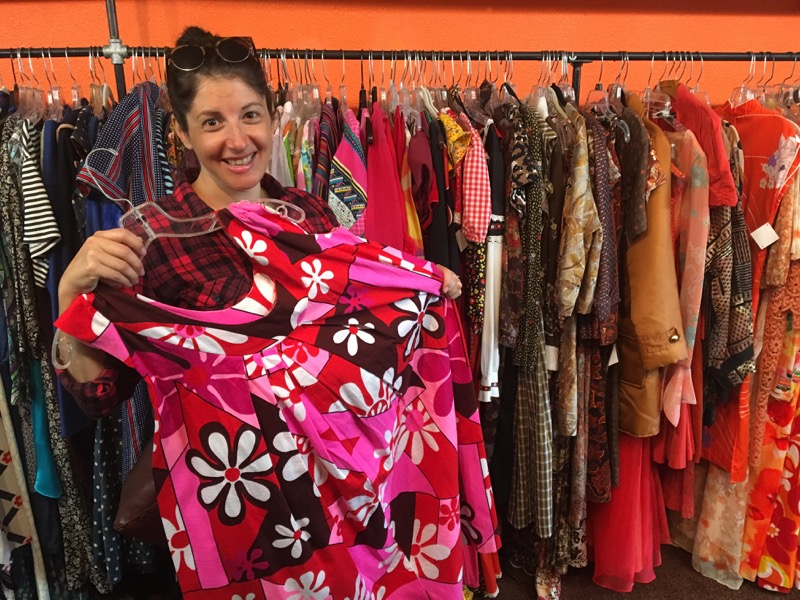
I shied away from vintage and second hand for a long time as I wasn’t quite sure how to pull it off, and for a time was also put off by what may be lurking in someone else’s old clothes. As it turns out, it’s not nearly as awful as what’s lurking in brand new clothes.
Four years ago I worked with a stylist who showed me the ropes and I have been hooked ever since. Before I get into how to make it happen, here is what I think you should know about the world of fashion and what most of us are buying, wearing and discarding.
Fast Facts About Fast Fashion
If you’ve ever looked at the “made in” tag on your t-shirts, jeans, party dresses or vintage-looking boho-chic flowy caftan purchased at the local mall, you’ve likely seen one of the following countries: India, China, Bangladesh, Vietnam, Pakistan and the Philippines. I think the reason we see these countries is fairly well known: labour is cheaper, there are fewer or no regulations around working conditions, and age of employment is often overlooked.

Here are some hard facts:
- The Chinese textile industry creates 3 billion tonnes of soot each year.
- It is estimated that a hundred pairs of hands touch each item of clothing before it reaches its new owner. Now consider your jeans and who was paid what in the making.
- According to figures from the U.S. National Labor Committee, some Chinese workers make as little as 12–18 cents per hour working in poor conditions.
- 97 percent of U.S.-sold clothes are made overseas, and 80 percent of those garment makers are young females between 18 and 24 years of age.
- 150 grams of pesticides and other agricultural chemicals are used to produce the cotton for just one t-shirt.
- Over 90 million items of clothing end up in landfill sites globally each year.
- The fashion industry is the second largest user of water in the world. More than a half trillion gallons of fresh water are used in the dyeing of textiles each year.
- Made from petrochemicals, polyester and nylon are not biodegradable, so they are unsustainable by their very nature.
- The world now consumes about 80 billion new pieces of clothing every year. This is 400% more than the amount we consumed just two decades ago.
One more? Those teen girls doing “shopping haul” videos on Youtube hurts my soul. Yes, this counts as a hard fact.
The Chemicals In Our Clothes
In grade nine, I did a science project on the chemicals used in the growing of cotton. This information stayed with me, and from then on I would never wear anything without first washing it. I now realize that simply running it through the washing machine may reduce my own personal exposure, that’s hardly the upstream solution. I was reminded of what our clothes contain in fashion school when we’d be in the sewing labs and there’d always be a few students whose hands would break out in serious dermatitis as a reaction to the chemicals used in the fabrics we were working with.
Here is what may be lurking in our clothes:
- Textile “dyes are creating a chemical Fukushima in Indonesia”.
- The dye wastewater is discharged, often untreated, into nearby rivers, where it reaches the sea, eventually spreading around the globe. China discharges roughly 40 percent of these chemicals.
- Chemicals of particular concern include highly fluorinated compounds used to make durable waterproof finishes, such as those on rain jackets.
- Formaldehyde, a known respiratory and skin irritant and also a known carcinogen, is used create garments that carry a “permanent press” claim. Testing done in New Zealand discovered formaldehyde levels in some Chinese clothes exports up to 900 times higher than the prescribed safety limit.
- Phthalates, which we know are hormone disruptors, are used as plasticizers or softening agents in fake leather (aka PVC) that is often used to make things like purses, wallets, shoes, belts and some unfortunate pants and dresses. As well, this is often used in T-shirt printing.
- Nonylphenols, another variety of hormone disruptors are commonly found in commercial detergents, as well as in compounds that are used to make dyes stick to the fibres.
- Nanosilver, an anti-bacterial agent, is commonly used in sports attire that claim to have “antimicrobial” and odour reducing qualities. Nanosilver has been found in waterways where products are both produced and worn and this chemical is being taken up by plants.
Additional chemical residues on clothing can include: caustic soda, sulfuric acid, bromines, urea resins, sulfonamides, halogens, and bromines. Some imported clothes are now infused with long-lasting disinfectants meant to keep the bugs out in transport and storage.
Some of these chemicals will be reduced through washing (where they then end up in the waterways), while others are persistent in the fibers and get to jump on board of us, via transdermal absorption and inhalation, and add to our own toxic load.
Greenwashing of Bamboo as a Textile
Bamboo fabrics have become quite popular as an ‘eco’ option because the bamboo plant regenerates so quickly. This is awesome for that yurt or fence you’re building in Bali, but when it comes to fashion it requires extremely high amounts of toxic chemicals to turn bamboo into garment-ready fabrics.
Alright then, considering alternate options to fast fashion that won’t break the bank might be looking rather appealing right now!
Eco/Sustainable Fashion Options
I know many people who pull off eco brands, rocking the hemp and organic cotton, locally-made styles. They look awesome and this, no doubt, is an awesome option. However it can be significantly more costly to build a wardrobe 100% out of sustainable, fair-trade and organic options. I definitely recommend allocating more budget to eco-friendly underwear, bras, leggings, t-shirts, sweats, sweaters and even denim. This is great for staple pieces.
But what about the big bold colour? The fun? I have found it tough to find bright, colourful and unique pieces that fall into the sustainable fashion criteria. In my opinion, this is where vintage and second-hand can have its day in the sun.
Why Choose Vintage?
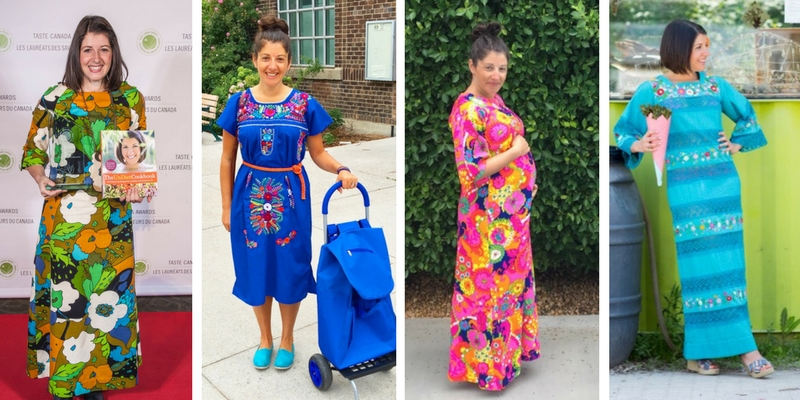
Quality
Often vintage clothing is just plain better. Yes, it may still be made out of synthetic fabrics but at least it’s not in a landfill. The fact that we can go into stores and buy items that are 40 years old and they are in as perfect condition as their first time around says something. Can you say the same for that H&M party dress or that Forever 21 blazer? Back in the day, clothing was built to last, to stand the test of time, take alterations without seams splitting and keep on keeping on.
Unique
Buying anything in a mainstream shop pretty much guarantees there are a few thousand other people who have also purchased the exact same thing. Not so with sweet vintage finds. You are a one of a kind, and sometimes you just might like to dress like it. Now, this doesn’t mean you have to go all out and pick a vintage era theme and dress the part always, but a good splash of a statement piece can be a fun addition to a basic jeans/t-shirt uniform.
Fun
Vintage shopping is an opportunity to explore your creative side and use your imagination. With smaller boutiques, the owner will likely be the person working there, be able to pull some items for you and may even have a sweet story to tell you about where the garment came from.
Guide To Buying Vintage
- Colour and Patterns: This is always where I start. I will quickly flip through racks of clothing looking at the colours and patterns.
- Fabric: I typically opt for cotton over synthetics just because I prefer the feeling of it. But given that we’re giving the garment another ride around the life cycle, I’m not overly concerned here with the fabric as long as it’s something that I’ll be comfortable in.
- Cut & Style: Yes, this comes in at number 3. You want the general silhouette to work for your body type and lifestyle, but often the details of how it fits can be remedied.
- Bad staining: There’s staining that can be altered away or incredibly subtle that it doesn’t matter. But you have to assume that a stain on a vintage garment is likely well set in there, so be sure to check that out. Common stain spots are the pits and hems.
- Machine Washable: I typically only buy clothing in general that is machine washable or hand washable. Dry-cleaning is a chemical-shizzle storm all on its own and best avoided.
- Moth holes: Though this can seem minor at the time, we rarely know how a garment has been stored and whether moth damage is done or can start-up again. Holes in knitted items can easily become bigger and bigger with every washing so be mindful to look out for this.
- Can it be altered? When shopping vintage, be prepared to pay less for the garment and invest a little more in some basic alterations. I’ve had waistlines lifted, sleeves cut to 3/4 quarter, arms widened and loads of hemming. One perk of vintage clothing is the common practice of generous seams and hems, which allows for loads of flexibility to let things out if needed. If taking something in, it’s a good idea to ask your go-to guy or gal to keep a little extra for future alteration needs.
- Will you wear it more than once? If you’ve checked off 1-7 above, this is obviously the key question. The garment may be an awesome fabric, the perfect fit and all that jazz, but you have to actually be comfortable in it and want to wear it.
Why Choose Second Hand or Thrift?
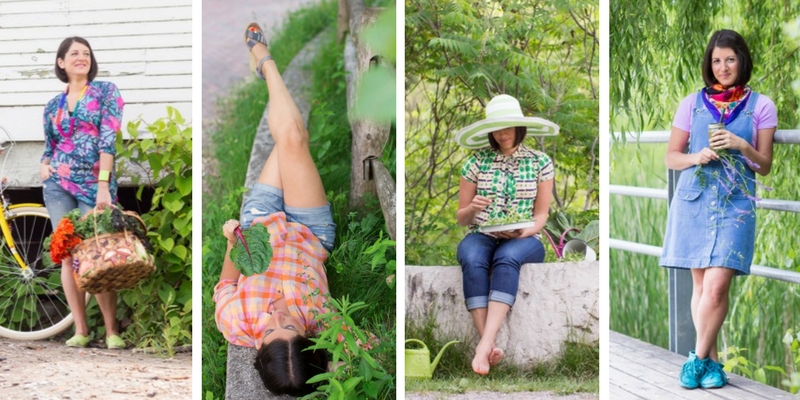
This one took me a little more time to get into. It requires a lot of wading through and dealing with a lot of detergent smells, which I am highly sensitive to. But I have found some awesome second hand pieces, many of which were featured in The UnDiet Cookbook.
Key Advantages to Second Hand or Thrift Shopping
- Find on trend, new items at a fraction of the original cost.
- Get designer clothing at a fraction of the original cost.
- Find brands and styles you may not normally see in your usual shopping spots.
- Give a second life to a perfectly fine garment and save it from landfill.
- Support a good cause as many second-hand stores sell clothing and housewares and put the funds towards social service programs.
- It’s fun!
Guide To Buying Second Hand or Thrift
- Colour and Patterns: As with vintage, you want to make sure this is what you’re after.
- Fabric: Look for fabrics that have staying power and can last you a few seasons, at the very least.
- Cut & Style: There is less opportunity for alterations with second hand or thrift so you’re going to want it to fit close to perfect, aside from perhaps basic hemming needs.
- Bad staining: There’s staining that can be altered away or incredibly subtle that it doesn’t matter.
- Machine Washable: Again, as with vintage, check the care label and make sure it makes sense for your intended use and lifestyle.
- Is it worth altering? If you find a dress that is $5 that’s awesome. Will it cost $80 to make it fit right and is that worth it for you?
- Would you pay full price? More is not always better so be sure to ask yourself if you would pay full price for the item – meaning, do you really love it? Don’t fall prey to mass consumption just because it’s cheap to do so.
My Favourite Places To Shop
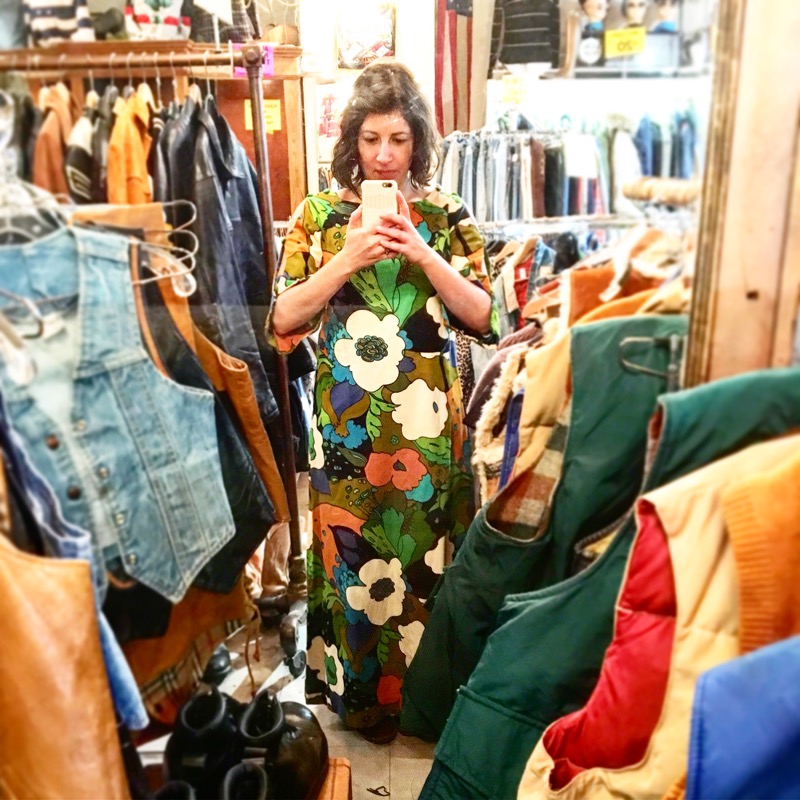
I will start by saying that I do not like shopping. Not at all. That was how I ended up working with a stylist when I needed a bunch of outfits for my first media tour. I never feel like I need anything, get exhausted by malls and generally find the fragrance and scented candles used in retail stores kind of intolerable. Basically, I suddenly channel my cranky old woman persona “Why’s it so loud in here? What’s that smell? What’s with the lighting?”
I love the vintage stores that are nearby in the Parkdale neighbourhood of Toronto where my kitchen is, and would recommend that the best places to go are those that are local to you. I also dive into the vintage finds when I’m travelling as well (Palm Springs is the mothership!!!).
And of course, two of my favourite online options that also support small businesses include:
Etsy
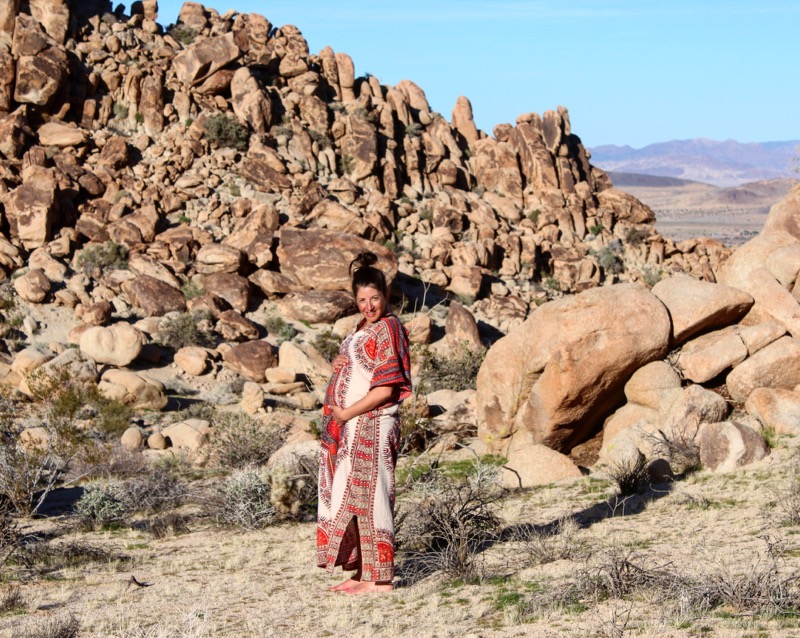
Tips for buying clothing on Etsy:
- You may wish to filter by country to reduce shipping fees.
- If you see something you love from a seller, check out the other offerings from the seller. You can often get a discount on shipping when you purchase two or more items.
- Add items to your favorites list as you scroll and you can then go back and check out the details.
- Always look at product specs to ensure sizing will work for you.
- Don’t be shy about asking the seller questions.
- This is also a great way to support small business and makers.
- Always review return/refund policy of seller.
E-Bay
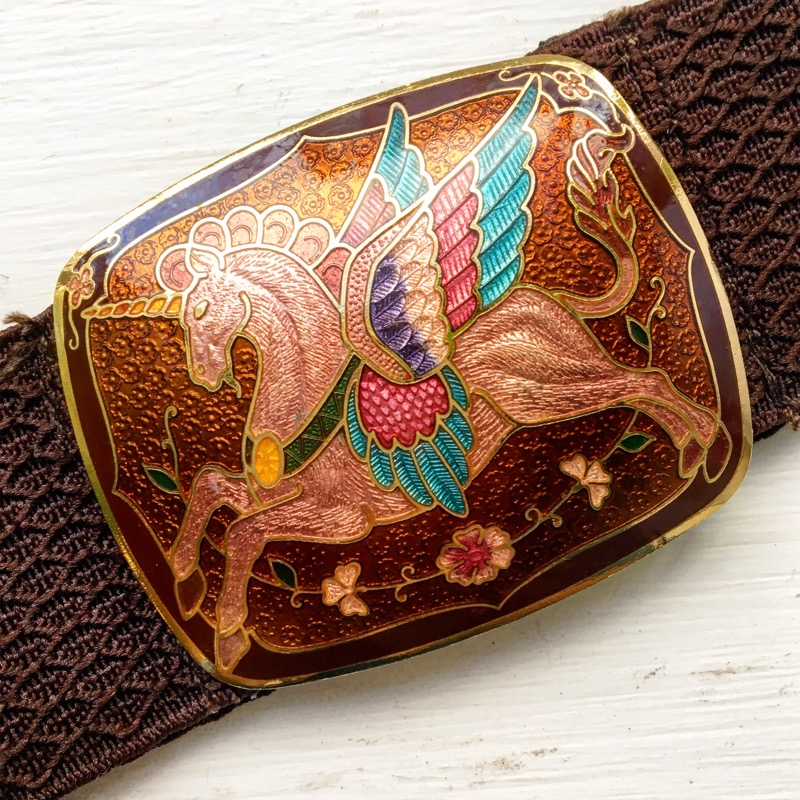
Yes, it is still around and still pretty awesome. eBay Canada, France and Germany were actually clients of mine at one of the advertising agencies I worked at in my last life. The best tip I got was if you are ever wanting to buy something by auction, Sunday is the time to be online placing your bids!
Tips for buying clothing on eBay:
- Use the “vintage” filter if you want to narrow your search.
- You can also filter by “free shipping” and other sweet perks.
- You can save a search and receive alerts when new items are added that match.
- Never be shy to bid, but be prepared to buy when you do bid. So far my bids have always been accepted!
- If you really, really love something, choose ‘buy now’, or you may miss it.
- Don’t be shy to ask the seller questions.
- Always review return/refund policy of seller.
Keeping It To A Minimum
This should maybe be the very first thing I discussed here, but it’s not always the most fun so I’ve tucked it in here at the end.
The ultimate key with our wardrobe, as with our lifestyles in general, is to find effective and efficient ways to reduce our overall consumption in general. I love that minimalism is on the rise and women are embracing the idea of capsule wardrobe, where you invest in ten great pieces and find 100 different ways to pair them. I have put a few practices in place that helps cut down on my overall load and thought this might be helpful:
- Inventory: Take stock/inventory of what you have. From there, make a list of your needs, what needs updating, refreshing and renewing.
- Give, give, give: Donate what no longer serves you: Use the donations bins you’ll often see in every city or town. Give away what you don’t wear. And you can even include old socks and things because typically the organizations that sort through the bins also have measures in place to recycle what can’t be re-used.
- Sell, sell, sell: Get to know your local consignment shop and other online resale options. This can be a great way to give new life to old favourites, and you might even find someone’s old favourites that will become your new favourite.
- Plan it out: Now that’s you’ve done a wardrobe cleanse, determine what you need to fill things in and what will help create the most options and be the most versatile. We’re trying to avoid the scenario of owning clothes that can only be worn in one way.
- Shop twice a year: When it comes to basics and essentials, filling in gaps or giving your wardrobe a light refresh, a fall and spring shop should suffice. Plan a budget for these excursions and though you may be startled by what you spend in one day, overall it’s significantly less than if you are shopping here and there.
- Spend more and buy less. There’s an excellent chance that a $60 organic cotton, locally made shirt will last you a lot longer than an $8 option. Invest in better quality clothes that will last.
- Take Care. Take good care of what you have, follow the washing directions, ditch the chemicals in your laundry and never store your clothes in plastic. Natural fibers need to breathe.
And there you have it. I am, of course, not asking you to change everything all at once, but it’s important to consider the impact our clothing choices have on both our health, our budget and the planet.
Extra bonus: my parents will be thrilled that in some small way, I have now officially put my 4-year university degree in fashion to some kind of professional use. Sort of.
More Resources to Explore:
- True Cost (documentary available on Netflix)
- Fashion Takes Action
- The Good Trade
- Center for Sustainable Fashion
- Remake.World : Get to know your makers
- Sustainable Fashion Resources on Treehugger
- Book: Overdressed: The Shockingly High Cost of Cheap Fashion
Free Resource Library
Enjoy more than 40 downloadable guides, recipes, and resources.















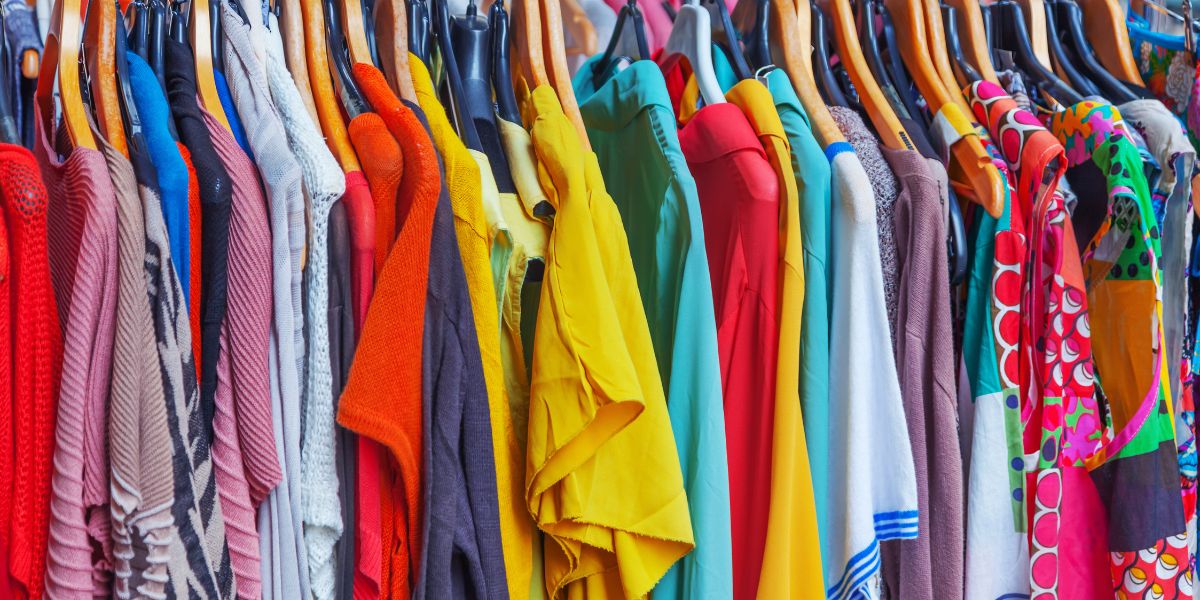
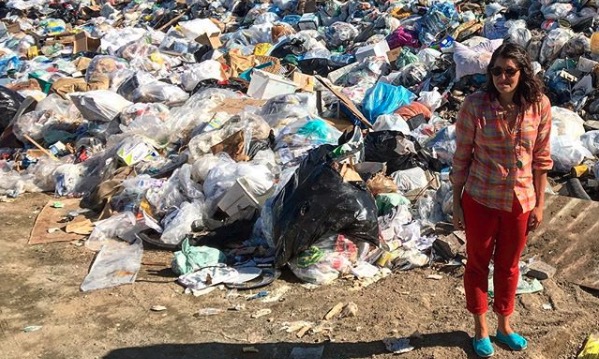
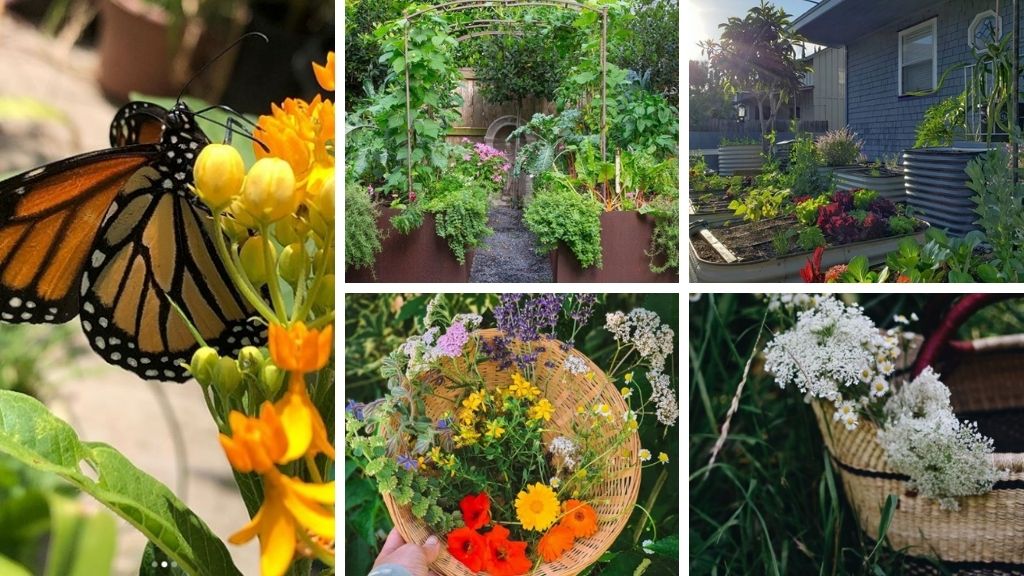
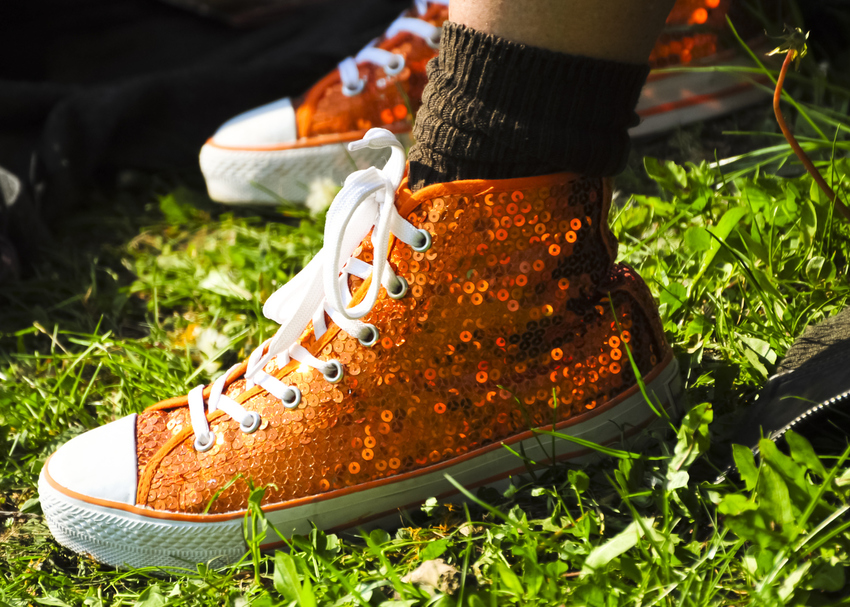
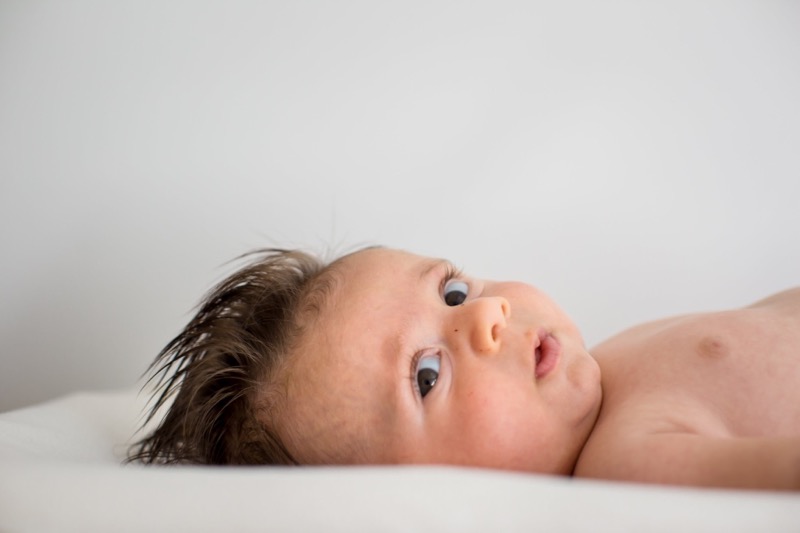

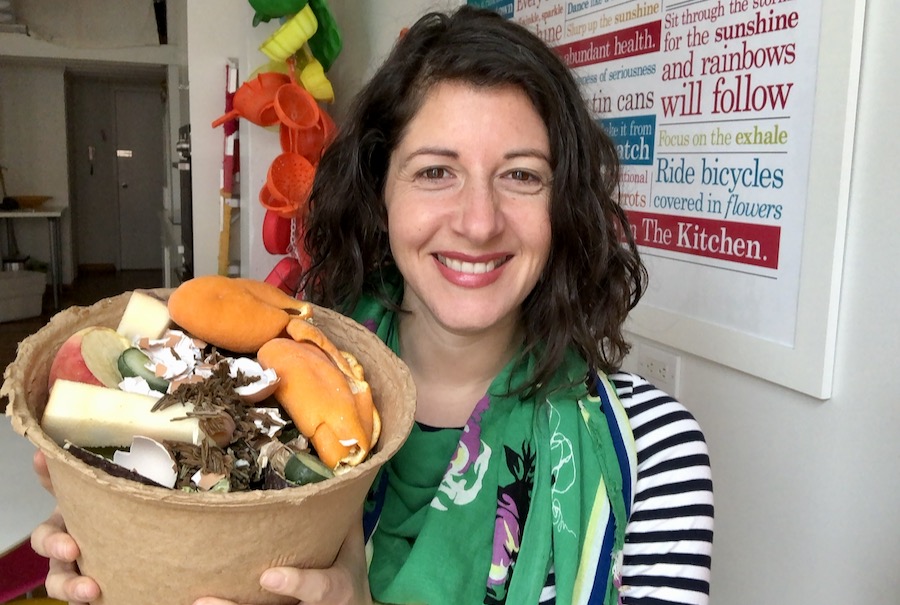


Hi Meghan,
What a great post and critical topic! I do my best to give away or find new homes for clothing, shoes, etc. that I no longer use. I also try not to buy items I don’t need. But only in the past couple of years have I given secondhand a chance. And there are so many wonderful pieces out there that deserve another go round. Thank you for championing the three Rs as they also apply perfectly to fashion!
Great, informative post! I was aware of the labour concerns with mass producing clothing, but had never thought of the environmental impact. A couple other places I like looking for used clothing are Kijiji and local buy and sell facebook groups.
This is a fantastic post! I HATE shopping but LOVE shopping vintage and second hand. I love the thrill of the find! My nutrition website is about to go live and I most definitely wore fab finds for my photo shoot from a store in Toronto called, The Good Exchange on Danforth. Love your style Meghan!
Great post. I would Just like to add that you should put the clothing through the dryer on high for 20 minutes to make sure you don’t bring bed bugs home. We have had a handful of clients that brought them home from thrift shops.
Firstly, your articles are thorough, and enjoyable read. Secondly, this article has enlightened me on the fashion scene. Most of my children’s Oshkosh came from second hand shops, . Your stats surprised me and the waste component of having too many fashion pieces scared me. I have some serious conscious thinking to do. Thank you!!
How do you deal with the fabric softener smell on 2nd hand finds? I was actually shopping through some old clothes of mine from my high school days that my mom had socked away, and 2 months after bringing them home, washing, and air drying in the sun, they STILL reek of chemical perfumes. I want to wear my vintage black velvet Micky Mouse sweatshirt but I get a headache every time I put it on! Any tricks to getting that smell out? It’s been over 30 years (ohmigosh!) since they were washed in chemicals so I’m thinking Mickey might be a lost cause. :(
Thank you for the informative article. I have a couple of questions -how do I get the smell out of my second hand clothing? What is the smell from? I am sensitive to fragrances , hanging them out in the wind & fresh air for days helps, but it certainly delays my opportunity to wear my great buys.
Does anyone else struggle with shopping at these places because of the smell ? New Fast Fashion isn’t nearly as odorous. – Marilyn